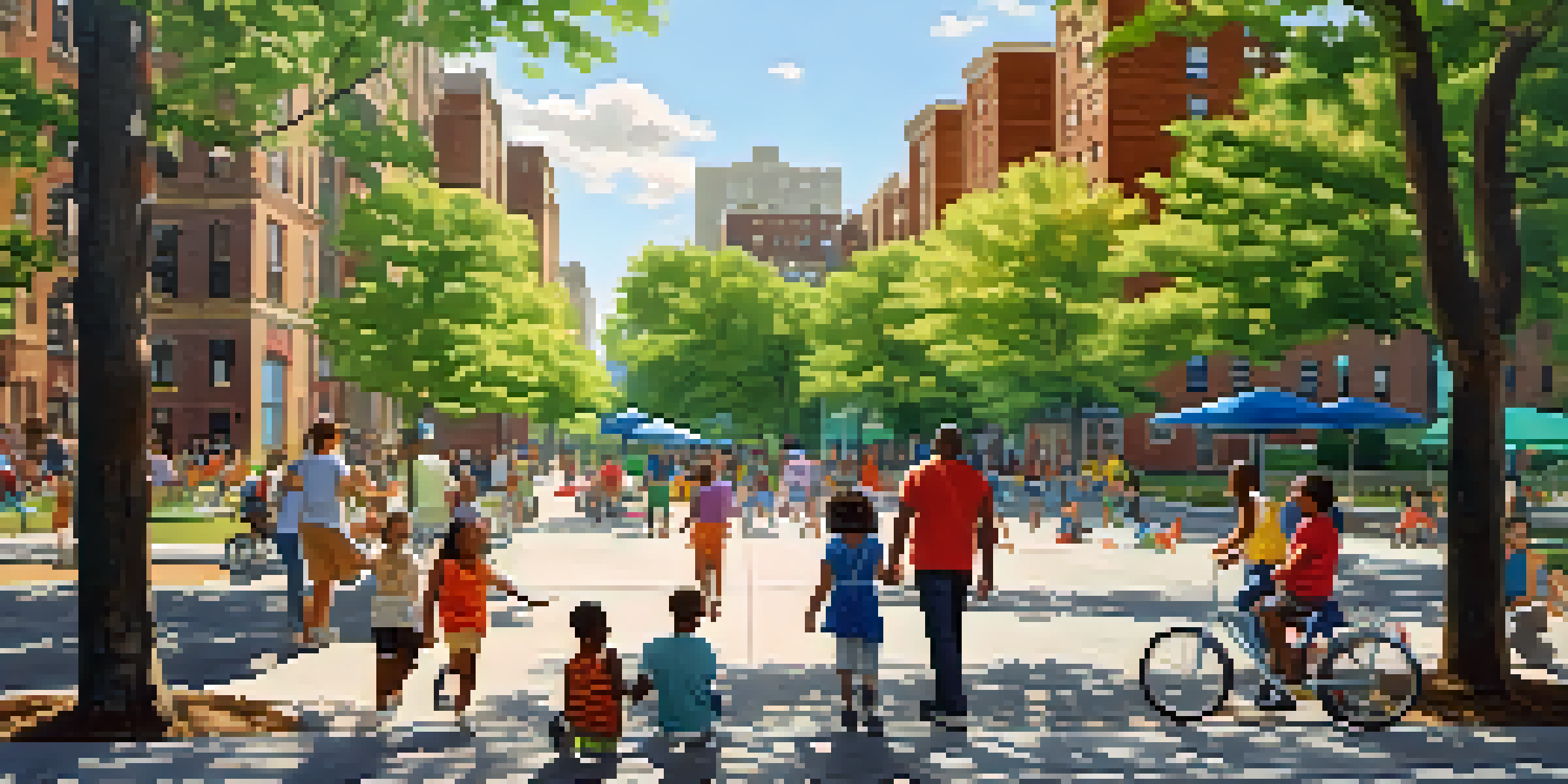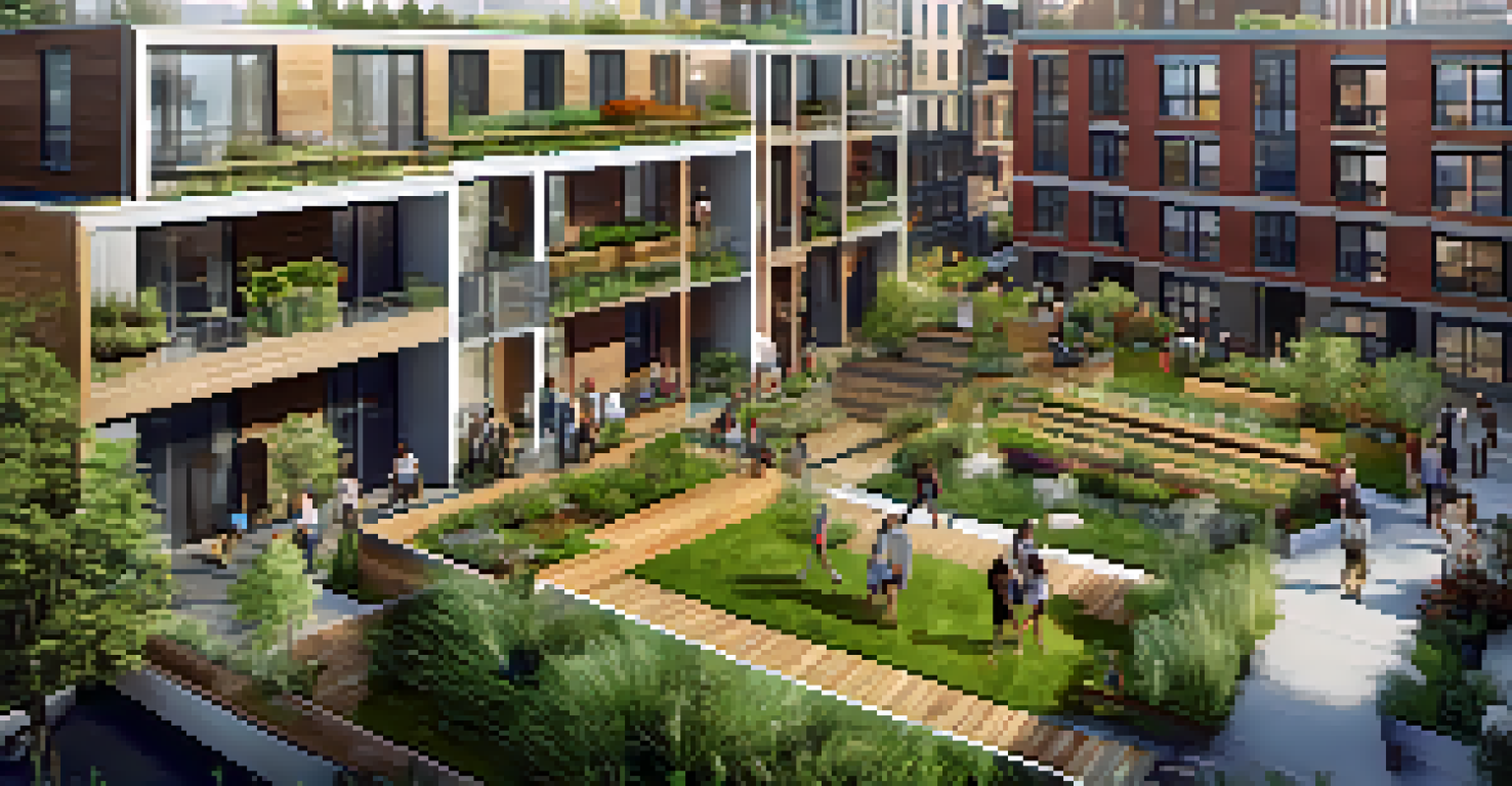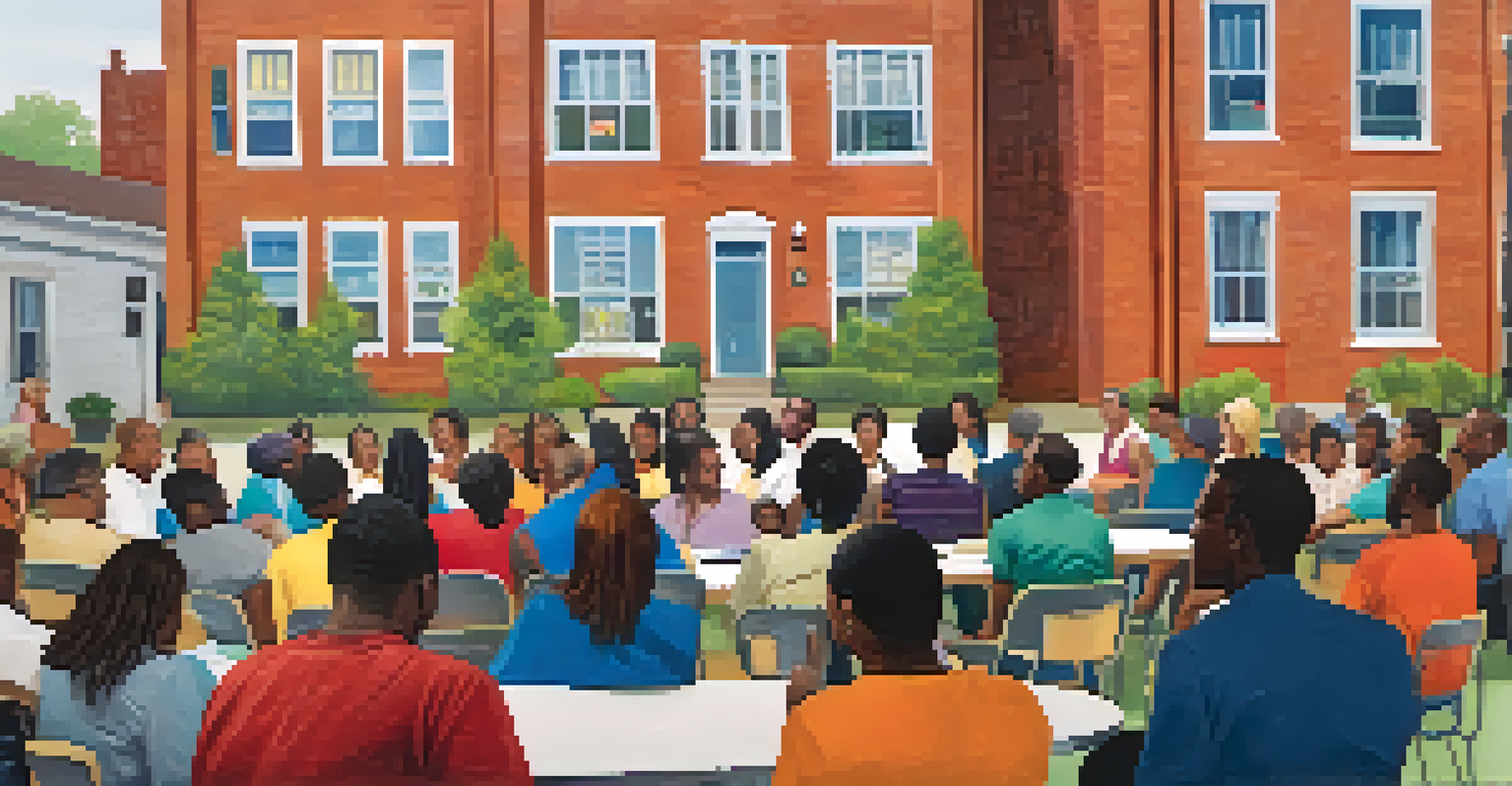Affordable Housing: A Pillar of Resilient NYC Communities

Understanding Affordable Housing and Its Importance
Affordable housing is more than just a roof over one's head; it's a critical need for many New Yorkers. It refers to housing that is affordable to those with a median income, ensuring that families can thrive without financial strain. This type of housing not only supports individuals but also strengthens the community fabric by promoting diversity and inclusivity.
Affordable housing is not just about providing shelter, but about creating opportunities for individuals and families to thrive.
In a city as vibrant as New York, the cost of living can be overwhelming. Many families find themselves devoting a large part of their income to rent, leaving little for other essentials. By providing affordable housing options, the city can reduce economic stress and allow residents to invest in their futures, whether that's through education, savings, or health.
Moreover, affordable housing plays a pivotal role in creating stable communities. When families are secure in their living situations, they are more likely to engage in their neighborhoods, fostering connections and support networks that contribute to overall resilience.
The Economic Impact of Affordable Housing
Affordable housing does not just benefit individuals; it has a significant positive impact on the local economy as well. When residents have access to affordable homes, they can spend their income on other local businesses, boosting the economy. This creates a ripple effect, leading to job creation and a more vibrant community.

Additionally, affordable housing can help mitigate the effects of gentrification, which often displaces long-term residents. By maintaining diverse neighborhoods, the city can ensure that various cultures and communities continue to thrive, enriching the overall character of NYC.
Affordable Housing Benefits Everyone
Affordable housing supports not only individuals and families but also strengthens local economies and communities.
Furthermore, investments in affordable housing often yield long-term savings for the city. By reducing homelessness and housing instability, the city can save on emergency services, healthcare costs, and other social services, allowing funds to be redirected towards further community development.
Challenges in Creating Affordable Housing
Despite its importance, creating affordable housing in New York City comes with significant challenges. High land costs, zoning regulations, and the competition for space can make it difficult for developers to build these necessary units. As a result, the supply often falls short of the demand, leaving many families in precarious situations.
A community is only as strong as its most vulnerable members. Ensuring affordable housing is a step towards a healthier, more resilient society.
Community opposition, often referred to as 'NIMBYism' (Not In My Backyard), can also hinder affordable housing projects. While residents may support the idea of affordable housing, they may not want it in their own neighborhoods, leading to conflicts and delays. Finding a balance between community interests and the need for housing is crucial.
Moreover, funding for affordable housing initiatives can be inconsistent. While government programs exist to support these efforts, they often face budget cuts and shifting priorities, making it challenging for ongoing projects to secure the necessary financial backing.
Success Stories in NYC Affordable Housing
In the face of challenges, New York City has seen some inspiring success stories in affordable housing. Projects like the Via Verde development in the Bronx exemplify how innovative design can create beautiful, sustainable living spaces that cater to low-income families. This project not only provides housing but also incorporates green spaces and community areas, enhancing residents' quality of life.
Another example is the East Side Coastal Resiliency Project, which combines affordable housing with climate resilience strategies. This initiative aims to protect vulnerable neighborhoods from flooding while also ensuring that affordable housing options remain accessible for generations to come.
Challenges in Creating Housing
High costs, community opposition, and inconsistent funding present significant hurdles in the development of affordable housing.
These success stories highlight the potential of affordable housing to transform communities. By focusing on innovative solutions and community involvement, NYC can continue to make strides in creating inclusive neighborhoods that are resilient to future challenges.
The Role of Government in Affordable Housing
Government plays a crucial role in the development and maintenance of affordable housing. Through various programs, subsidies, and tax incentives, local, state, and federal governments can support developers in building and preserving affordable units. This involvement is essential to ensure that housing remains accessible to those who need it most.
Moreover, policies that promote mixed-income developments can foster integration and reduce segregation. By encouraging diverse communities, the government can help counteract the negative effects of economic disparity, leading to healthier neighborhoods overall.
However, effective government support also requires collaboration with community organizations and residents. By involving those who are directly impacted by housing policies, the government can create solutions that truly meet the needs of the community.
Community Engagement and Affordable Housing
Community engagement is vital to successful affordable housing initiatives. When residents are involved in the planning and decision-making processes, they can advocate for their needs and preferences, ensuring that developments align with community values. This active participation fosters a sense of ownership and pride among residents.
Engaging with local organizations and advocacy groups can also amplify voices that might otherwise go unheard. These groups often have valuable insights and can help bridge the gap between developers and residents, creating a more collaborative environment for affordable housing projects.
Community Engagement is Key
Involving residents in planning processes ensures that affordable housing projects meet the needs and values of the community.
Ultimately, community engagement leads to more sustainable outcomes. When residents feel heard and valued, they are more likely to support new developments, leading to successful projects that benefit everyone involved.
Looking Ahead: The Future of Affordable Housing in NYC
As New York City continues to grow, the need for affordable housing will only increase. Looking ahead, it’s essential for city planners, developers, and community members to collaborate on innovative solutions that address this pressing issue. Strategies could include adaptive reuse of existing buildings, promoting affordable housing within new developments, and utilizing public land for community-focused projects.
Tech advancements also present opportunities to streamline the building process and reduce costs. For example, 3D printing technology and modular construction methods could lead to faster and more affordable housing solutions. By embracing these innovations, NYC can better meet the demands of its diverse population.

Ultimately, a commitment to affordable housing will ensure that all New Yorkers have a place to call home. As the city moves forward, prioritizing inclusivity and resilience in housing policies will be essential to building stronger, more vibrant communities.